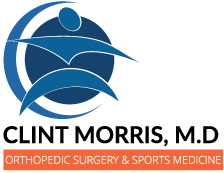Adolescent girls who participate in competitive or recreational sports are at a higher risk for anterior cruciate ligament or ACL injuries than adolescent boys. In fact, recent studies have shown female athletes have roughly three times greater risk of ACL tears during soccer and basketball.
Why the increased risk?
Anatomy, limb alignment, and hormonal and neuromuscular sources have been discussed by researchers as possible causes. Patterns in female athletes during landing positions have also shown a more erect posture and tendency towards a different knee rotation when compared to males. Furthermore, females have a higher quadriceps hamstring muscle mass ratio than males. This means female athletes are more likely to sustain alterations in knee alignment during landing due to their posture and are less likely to land properly and thus are at higher risk for ACL tear.
Unlike physical gender differences, muscle control can be improved and this may be an opportunity for sports medicine professionals to intervene. Enhanced muscular control of the lower extremities is possible through focused strengthening activities such as, plyometrics (jump training) and feedback-driven balance exercises. Exercise programs designed at preventing female ACL tears were first popularized almost 10 years ago. Since then the International Olympic Committee has acknowledged that prevention programs are effective in reducing ACL injury. Programs generally require 10 minutes or more of focused injury prevention exercises throughout the course of eight or more weeks.
Strengthening exercises that target the quadriceps, hamstrings, and gluteals, such as squats and lunges,
counteract knee caving that places the athlete at high risk. Planks, prones, and core exercises also improve
trunk strength and core stability.
Plyometric exercises are explosive, repetitive jumping exercises where targeted muscles in a stretched position rapidly contract. This combination of eccentric and concentric muscle contractions increases muscle power. Examples include dual and single leg squat jumps, bounding exercises, and box jumps that progressively increase in duration and intensity as the athlete gains proficiency and strength.
This type of training depends upon proper feedback and balance. Hip and gluteal strengthening can be enhanced with single leg exercises (step-ups, single leg lunges, etc.) to improve balance. Feedback from coaches and group participation can highlight deviations and reinforce proper form.
Multiple resources exist for sports medicine clinicians, coaches, and parents interested in active ACL prevention programs. The Prevent Injury, Enhance Performance orPEP program is one of the most common.

 Dr. Morris has more than 23 years experience in the Texas Hill Country in the care of Sports Medicine and orthopedic surgery.
Dr. Morris has more than 23 years experience in the Texas Hill Country in the care of Sports Medicine and orthopedic surgery. 